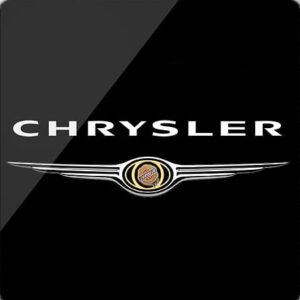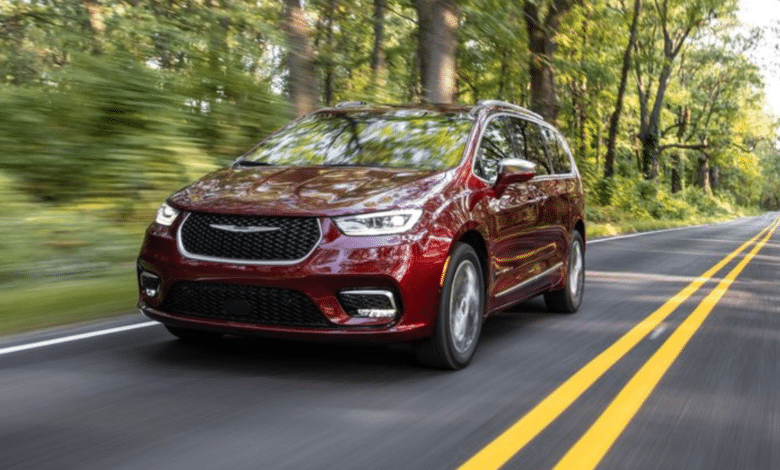2023 Chrysler Pacifica: A strange incident occurred as everyone was preoccupied with the newest rugged-looking crossover vehicles. The utilitarian minivan…
Read More »Chrysler
About Chrysler

The Maxwell Motor firm was destroyed, and Walter Chrysler founded the Chrysler Corporation, which bears his name, in 1925. Chrysler made his name at Buick by trade as an engineer and a competent manufacturing manager. Chrysler turned his attention to Toledo, Ohio’s struggling Willys-Overland Motor Company after using up his three-year deal at Buick for an unheard-of $10,000 monthly with an annual bonus of half a million dollars.
After saving Willys-Overland from bankruptcy, he was asked to undertake a similar triage at Maxwell Motors. He laid the foundation for the new firm that would carry his name while rejuvenating the business by introducing the Chrysler 70 model (also known as the “70 B”). 1925, Maxwell went out of business, and the newly named Chrysler Corporation took over its assets. In 1928, the mid-priced Desoto and value-oriented Plymouth brands joined the 70. Chrysler later acquired the Dodge Brothers Company to complete its portfolio and changed its name to Dodge.
Keeping with his technical heritage, Chrysler wasted no time integrating cutting-edge innovations unavailable on most cars. Early on in the history of the company, high-compression engines with pressurized lubrication, air and oil filtration, rubber engine mounts, blow-out-resistant wheels, and mass-produced hydraulic brake systems (created in collaboration with Lockheed) all made an appearance.
The 1934 “Airflow” model was a mistake. Chrysler spent a lot of time and money building the first wind tunnel in the industry to produce aerodynamically advanced vehicles. Still, sadly, the public did not find the designs appealing. Thankfully, Chrysler continued to have a few of its more conservative early models throughout the crisis. The first all-transistor automobile radio was installed in 1955’s Imperial, Chrysler’s priciest model and the first vehicle to be split off as a separate brand.
Chrysler’s well-known CEO, Lee Iacocca, famously requested and obtained a $1.5 billion federal rescue loan from the U.S. government in 1979; Chrysler would ultimately return the debt in full. Following the reasonable purchase of American Motors Corporation, which contained Jeep, after the successful minivan’s 1984 introduction, Chrylser was well-positioned to gain from the upcoming sport-utility vehicle sales boom.
Chrysler and Daimler-Benz engaged in a contentious “merger of equals” in 1998 with questionable outcomes for both sides. Cerberus Capital intervened and acquired over 80% of the shares in 2007. In 2009, Fiat and the manufacturer announced forming a worldwide alliance, and soon after that, Chrysler filed for bankruptcy. The Chrysler Group LLC emerged from bankruptcy after a substantial restructuring.
Alfa-Romeo, Dodge, Fiat, Jeep, Maserati, and Ram are all brands that are a part of Fiat Chrysler Automobiles (FCA) and Chrysler. The company produces and sells only the Chrysler 300 luxury sedan and Chrysler Pacifica minivan.
Design
- Exterior Styling: Chrysler cars are traditionally known for their bold and distinctive designs. They often feature a blend of classic American styling cues with modern aesthetics. This includes large grilles, strong character lines, and a substantial, often luxurious appearance.
- Interior Quality: Chrysler interiors have varied over the years, with recent models focusing more on quality materials and ergonomic design. They offer comfortable seating, user-friendly controls, and a blend of practicality and luxury.
- Customization and Trim Options: Chrysler typically offers a range of trim levels, allowing buyers to choose from basic to more luxurious configurations. This includes options for different engines, interior materials, and technology packages.
Performance
- Engine Options: Chrysler’s engine lineup usually includes various options, from more economical four-cylinder engines to powerful V6 and V8 engines, particularly in their larger models and performance-oriented trims.
- Transmission and Drivetrain: Automatic transmissions are standard across the Chrysler range, with some models offering advanced features like eight-speed automatics or all-wheel drive.
- Handling and Ride Quality: Chrysler cars are generally tuned to balance comfort and responsive handling. They focus on smooth ride quality, making them well-suited for long drives and highway cruising.
Technology
- Infotainment and Connectivity: Chrysler vehicles are typically equipped with modern infotainment systems, offering touchscreen interfaces, smartphone integration, and multimedia options.
- Safety Features: Advanced safety features, including adaptive cruise control, lane departure warning, and automatic emergency braking, are often available or standard, depending on the model.
- Efficiency and Electrification: As of my last update, Chrysler had been moving towards electrification, with hybrid models available and plans for fully electric vehicles in the pipeline.
Market Position and Reputation
- Brand Perception: Chrysler is often seen as a manufacturer of comfortable, stylish, and somewhat premium vehicles positioned between mainstream and luxury segments.
- Reliability and Quality: Historically, Chrysler’s reliability ratings have been mixed, with some models performing better than others. Potential buyers need to research specific models and years.
- Value for Money: Chrysler vehicles generally offer a good balance of features, comfort, and performance for their price, particularly in the full-size sedan and minivan segments.
- Competitive Landscape: Chrysler competes with many brands, from mainstream manufacturers like Ford and Chevrolet to more premium brands in specific segments.
Future Trends
- Electrification and Sustainability: Like many automakers, Chrysler is expected to continue focusing on electrification and more sustainable vehicle solutions.
- Autonomous Driving Technologies: Advancements in driver-assistance technologies and steps towards autonomous driving will likely be a focus for future Chrysler models.
- Market Adaptation: Chrysler may continue to adapt its lineup to meet changing market demands, potentially focusing more on SUVs, crossovers, and electric vehicles, following global automotive trends.
For specific, detailed diagrams and in-depth technical analysis of particular Chrysler models, I recommend consulting service manuals, technical resources specific to the automotive industry, or Chrysler’s official publications and resources.

